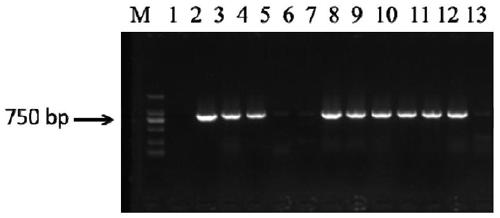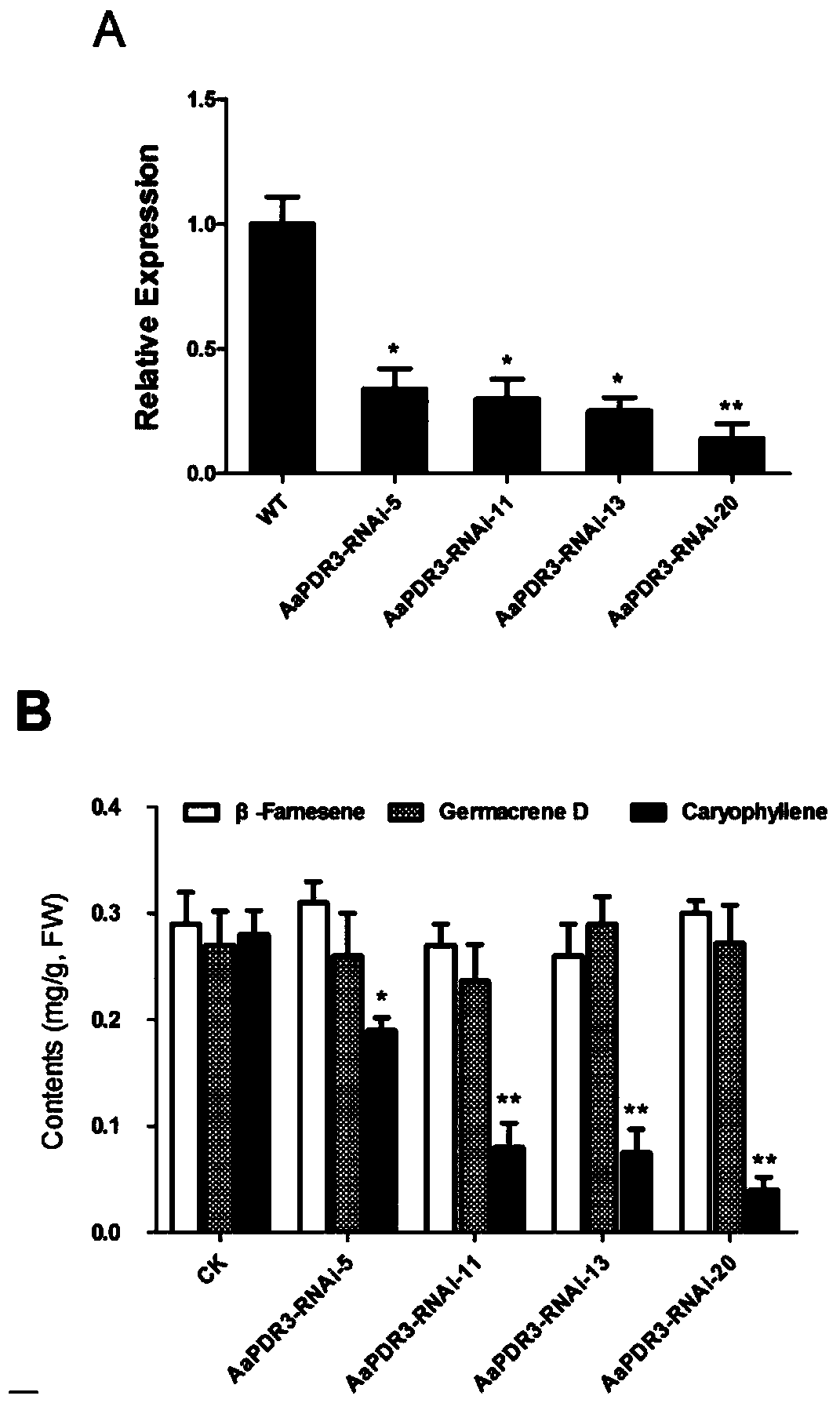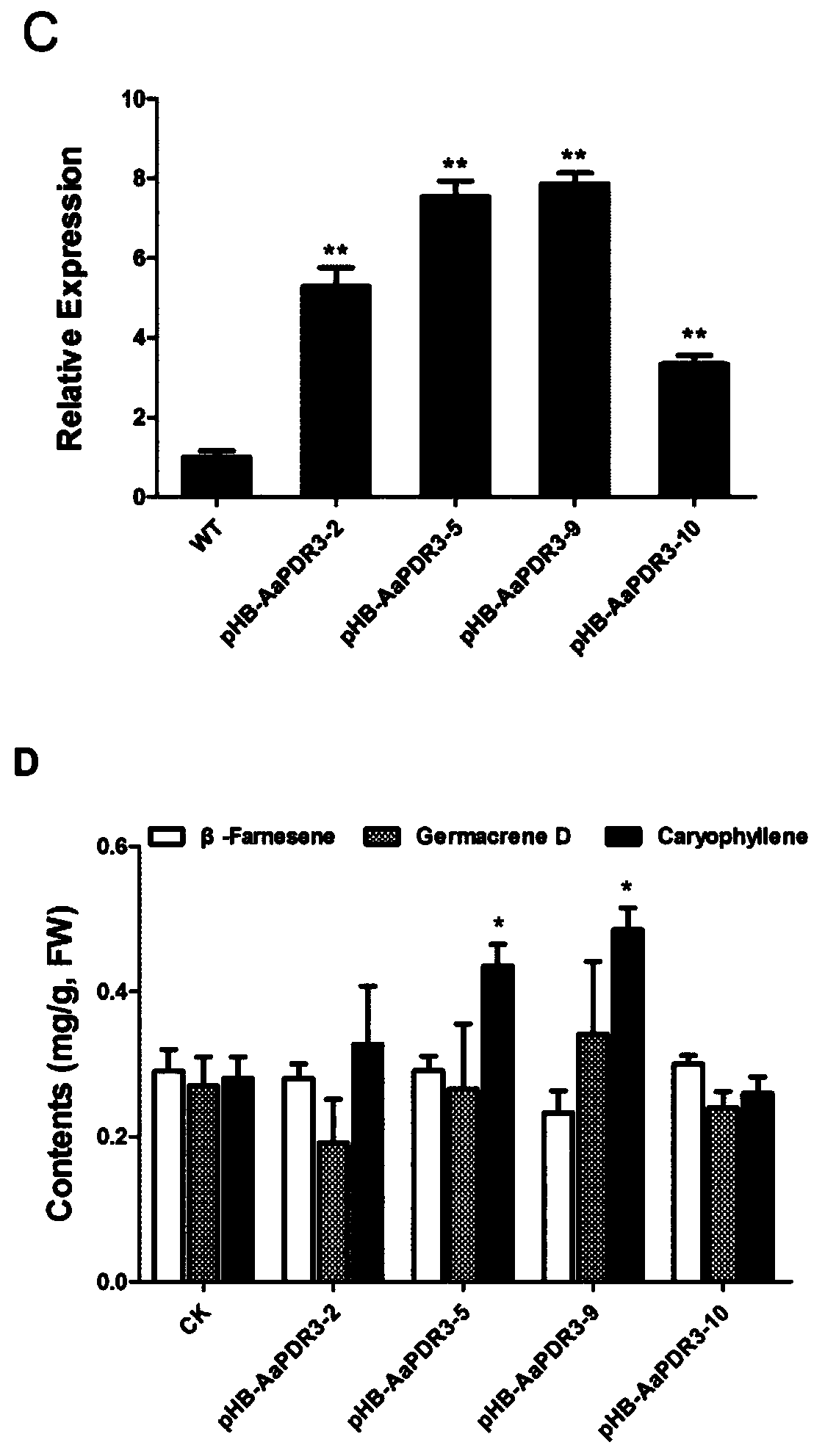Artemisia annua transporter aapdr3 and its application
A technology of transporter and Artemisia annua, applied in the field of bioengineering, can solve the problems of low artemisinin content and inability to fully meet market demand, and achieve the effect of increasing artemisinin content
- Summary
- Abstract
- Description
- Claims
- Application Information
AI Technical Summary
Problems solved by technology
Method used
Image
Examples
Embodiment 1
[0028] Cloning of AaPDR3 Gene of Artemisia annua
[0029] 1. Extraction of Total RNA from Artemisia annua Genome
[0030] Take the leaf tissue of Artemisia annua, grind it in liquid nitrogen, add it to a 1.5mL Eppendorf (EP) centrifuge tube filled with lysate, shake it fully, and extract total RNA according to the instructions of the TIANGEN kit. The quality of total RNA was identified by agarose gel electrophoresis, and then the RNA content was determined on a spectrophotometer.
[0031] 2. Cloning of the AaPDR3 gene of Artemisia annua
[0032] Using the extracted total RNA as a template, cDNA was synthesized under the action of PowerScript reverse transcriptase; gene-specific primers were designed according to the sequence of the AaPDR3 gene, and the AaPDR3 gene was amplified from the total cDNA by PCR and sequenced.
[0033] Through the above steps, the full-length 4278bp of the transcription protein in Artemisia annua has been obtained, the coding sequence, that is, the ...
Embodiment 2
[0039] Construction of plant interference expression vector containing AaPDR3 gene
[0040] 1. Construction of the intermediate vector pTOPO‐AaPDR3
[0041] Upstream primers and downstream primers were designed in the non-conserved region of the AaPDR3 gene to construct interference vectors. Add CACC four bases before the upstream primer to construct Gateway entry vector. According to Invitrogen pENTR TM / The operation steps of the Cloning Kit are to first amplify the fragment of AaPDR3 with flat-end enzyme, recover and purify it, and connect it to the pENTR / D-TOPO vector through Gateway cloning technology.
[0042] 2. Construction of plant expression interference vector pHELLSGATE1.2‐AaPDR3
[0043] According to Invitrogen LR Operation of the II Enzyme kit, the interference fragment of AaPDR3 in the pTOPO‐AaPDR3 vector is recombined into two recombination sites that can form a hairpin structure in the RNA interference vector pHELLSGATE1.2, and the RNA interference vec...
Embodiment 3
[0048] Construction of Plant Overexpression Vector Containing AaPDR3 Gene
[0049] The AaPDR3 gene was constructed on the overexpression vector. In order to facilitate the construction of the expression vector, the restriction site of BamHI was introduced into the forward primer, and the restriction site of XbaI was introduced into the reverse primer. The primers are shown in Table 4;
[0050] Table 4 shows the PCR primers BamHI-AaPDR3-FP (SEQ ID No.7) and AaPDR3-XbaI-RP (SEQ ID No.8) used in the above-mentioned overexpression vector construction
[0051] Primer name Primer sequence (5'→3') BamHI‐AaPDR3‐FP CGGGATCCATGGATGGAAGTGATATTTA AaPDR3-XbaI-RP GCTCTAGACTATCTCTTTTGGAAATTAAATGC
PUM
 Login to View More
Login to View More Abstract
Description
Claims
Application Information
 Login to View More
Login to View More - R&D
- Intellectual Property
- Life Sciences
- Materials
- Tech Scout
- Unparalleled Data Quality
- Higher Quality Content
- 60% Fewer Hallucinations
Browse by: Latest US Patents, China's latest patents, Technical Efficacy Thesaurus, Application Domain, Technology Topic, Popular Technical Reports.
© 2025 PatSnap. All rights reserved.Legal|Privacy policy|Modern Slavery Act Transparency Statement|Sitemap|About US| Contact US: help@patsnap.com



